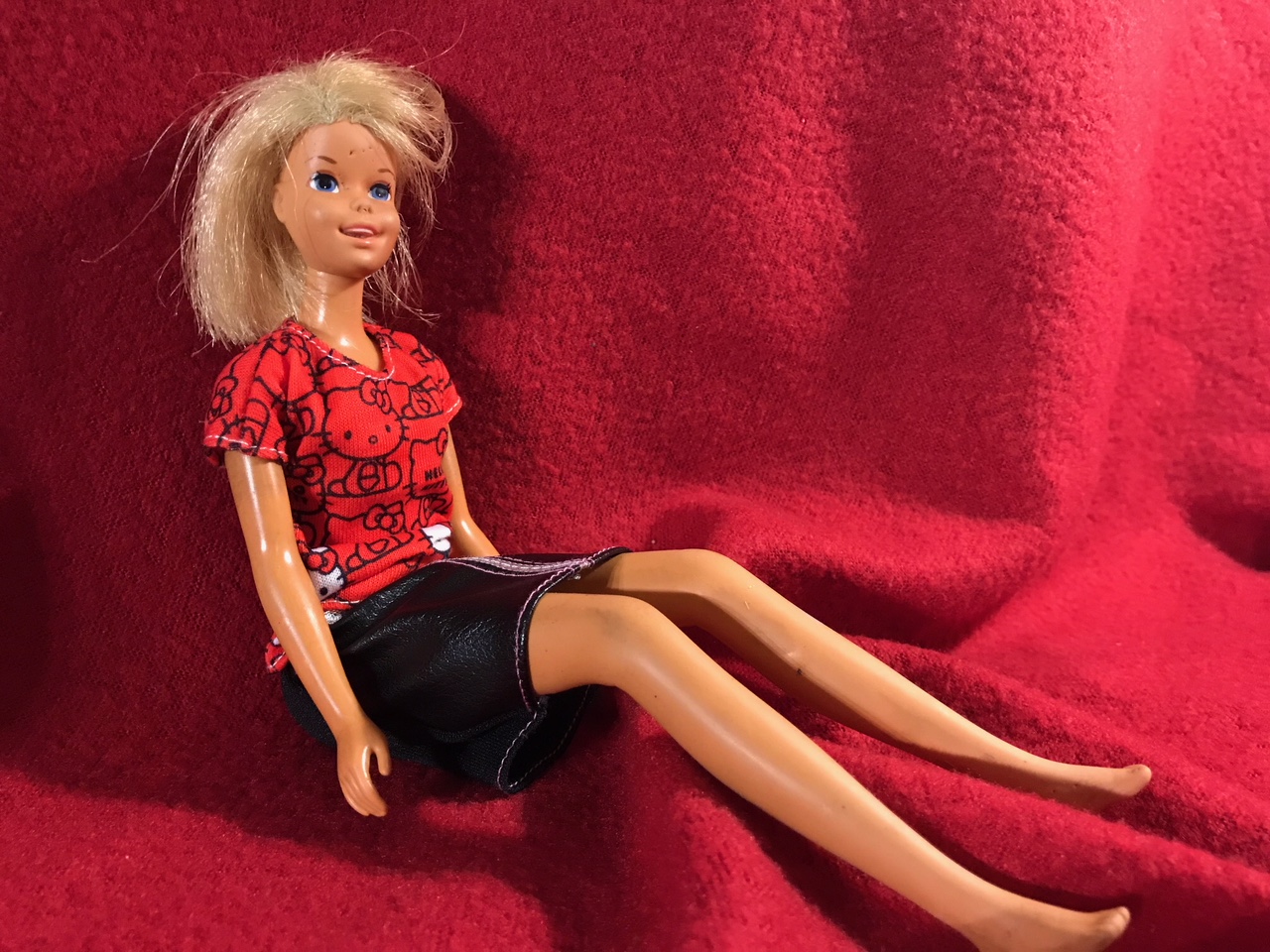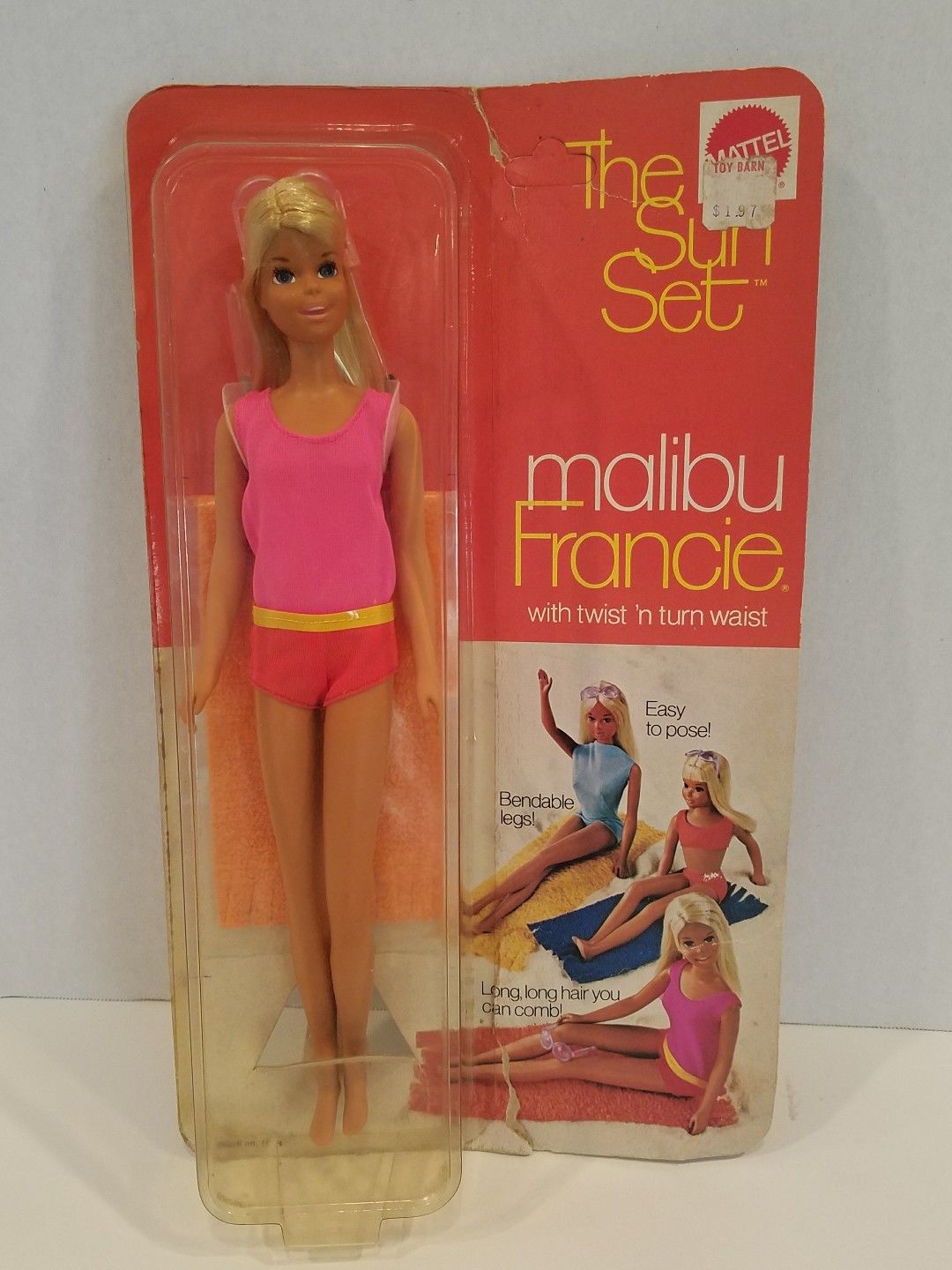This vintage (c. 1970) “Malibu Francie” Barbie tested positive for unsafe levels of Lead and Cadmium
For those new to this website:
Tamara Rubin is a multiple-Federal-award-winning independent advocate for childhood Lead-poisoning prevention and consumer goods safety, and a documentary filmmaker. She is also a mother of Lead-poisoned children (two of her sons were acutely Lead-poisoned in 2005). Since 2009, Tamara has been using XRF technology (a scientific method used by the U.S. Consumer Product Safety Commission) to test consumer goods for toxicants (specifically heavy metals — including Lead, Cadmium, Mercury, Antimony, and Arsenic). All test results reported on this website are science-based, accurate, and replicable. Items are tested multiple times to confirm the test results for each component tested. Tamara’s work was featured in Consumer Reports Magazine in February of 2023 (March 2023 print edition).
Published: December 20, 2017
Updated: July 18, 2023 — Tuesday
I picked up this Malibu Francie doll several years ago at a vintage toy store. She was naked so I decided to buy her some modern clothes (#ThankYouWalmart!). The last time I published pics of a naked vintage Barbie and her Lead levels, I got a lot of complaints from some of my more conservative followers on social media!
This vintage Malibu Francie Barbie doll tested positive for unsafe levels of both Lead and Cadmium in various components:
- Leg: 3,376 +/- 93 ppm Cadmium (Cd)
- Back: 673 +/- 27 ppm Cadmium (Cd)
- Face: 121 +/- 24 ppm Lead (Pb) &1,359 +/- 39 ppm Cadmium (Cd)
- Arm: 3,957 +/- 116 ppm Cadmium (Cd) & 58 +/- 27 ppm Lead (Pb)
Cadmium is a known Carcinogen (causes cancer) and is generally considered toxic to children at levels of 40 ppm or higher. You can read more about the regulatory standards for Cadmium at this link.
Federal agencies agree there is no safe level of Lead exposure. Lead causes neurological damage in children (my son has a permanent brain injury from being acutely Lead-poisoned as a baby) and a host of other health complications — including increasing the risk of heart disease and kidney disease (you can read more about the symptoms of Lead exposure in children here and in adults here). A primary concern for even trace levels of Lead exposure is fertility complications including infertility and low birthweight in newborns (you can read more about that here).
Lead in modern toys is regulated (since 2008) and considered illegal/ toxic/ unsafe for children at levels of 90 ppm and higher in the paint, glaze, or coating of an item; and at levels of 100 ppm (or higher) in the substrate (base material) of an item. As a result of the test results shown above, this doll (and others from this set — “The Sun Set,” manufactured at the same time, c. 1970s) should not be considered safe for children to play with.
If you have a doll like this (or a similar doll from this era by this manufacturer) you should consider disposing of it (you can read more about considerations with disposal here). OR, at least keep it in a display case with a prominent and visible note stating that it is not safe for children to play with. Because Barbies are first and foremost toys, and children will gravitate toward playing with them, I would actually hesitate to even display a doll like this (of this era/potentially incredibly toxic) in a home with small children (especially children who might put one or more components of this doll in their mouth/ children who might be inclined to chew on the rubbery legs for example).
Some additional reading for those who are interested:
- More dolls we have tested for toxicants
- Specifically more VINTAGE dolls we have tested
- More vintage TOYS we have tested
- More TOYS we have tested (vintage and new)
- Will this item poison me? — An article
- The impact of low-level Lead exposure in children — An article
- What do we use to test for toxicants (heavy metals)? — An article
- The Lead Safe Mama, LLC “About” page, for those who are new here
Some safer (Lead-free) choices
Modern dolls made after 2010 should be fully compliant with the Consumer Product Safety Improvement Act of 2008 (CPSIA) and therefore should be safe for children (negative for toxicants including Lead and Cadmium) as long as the doll is a product that is/was sold and marketed with language indicating it was created expressly for use by children.
Items (including dolls) sold as “collectibles” or with a tag stating they are “not intended for use by children” are likely to be positive for unsafe levels of one or more toxicants (Lead, Cadmium, Mercury, Arsenic, Antimony, etc.) and should not be given to children to be played with.
- Here’s a similar but modern (Lead-free and Cadmium-free!) doll on Amazon.*
- Here’s the shirt she’s wearing (if you are interested!).
*Amazon links are affiliate links. If you purchase something after clicking on one of our links we may receive a small percentage of what you spend — at no extra cost to you.


Original packaging and outfit (as seen on eBay).
Never Miss an Important Article Again!
Join our Email List












This doll was produced in 1971. Of course it is going to have lead-based paint.
It does not have lead-based paint.
You didn’t read Tamara’s post……
Maybe you can just blur out the controversial bits with a free photo editor like GIMP–then you won’t have to handle such items as much!
Hi there! Do you have information on if modern day barbies are free of heavy metals?
Thank you!
Hi Taylor! Barbies made since 2011 are definitely Lead-free. I haven’t done thorough testing of new Barbies so I don’t know about other metals they may or may not contain, but I am certain they comply with all current regulatory standards.
Here’s how to send something in for testing: https://tamararubin.com/2019/08/tamara-can-i-send-you-one-of-my-dishes-to-test-for-lead/
Tamara
Ok! Thanks for all you do lead safe mama!
Would you trust Barbie sets from 1999- mid 2000’s?
I would be cautious of any with rubberized legs. I don’t know at what point they changed manufacturing standards to ensure they were Lead-free.
T
I must have a hundred Barbie’s of my daughters. Probably started getting them mid 90’s. So you’re saying that the ones with hard plastic legs are safe but the ones with hard rubber legs are not? I was going to start giving them to my granddaughters, but now I’m not sure that I should even donate them. ??